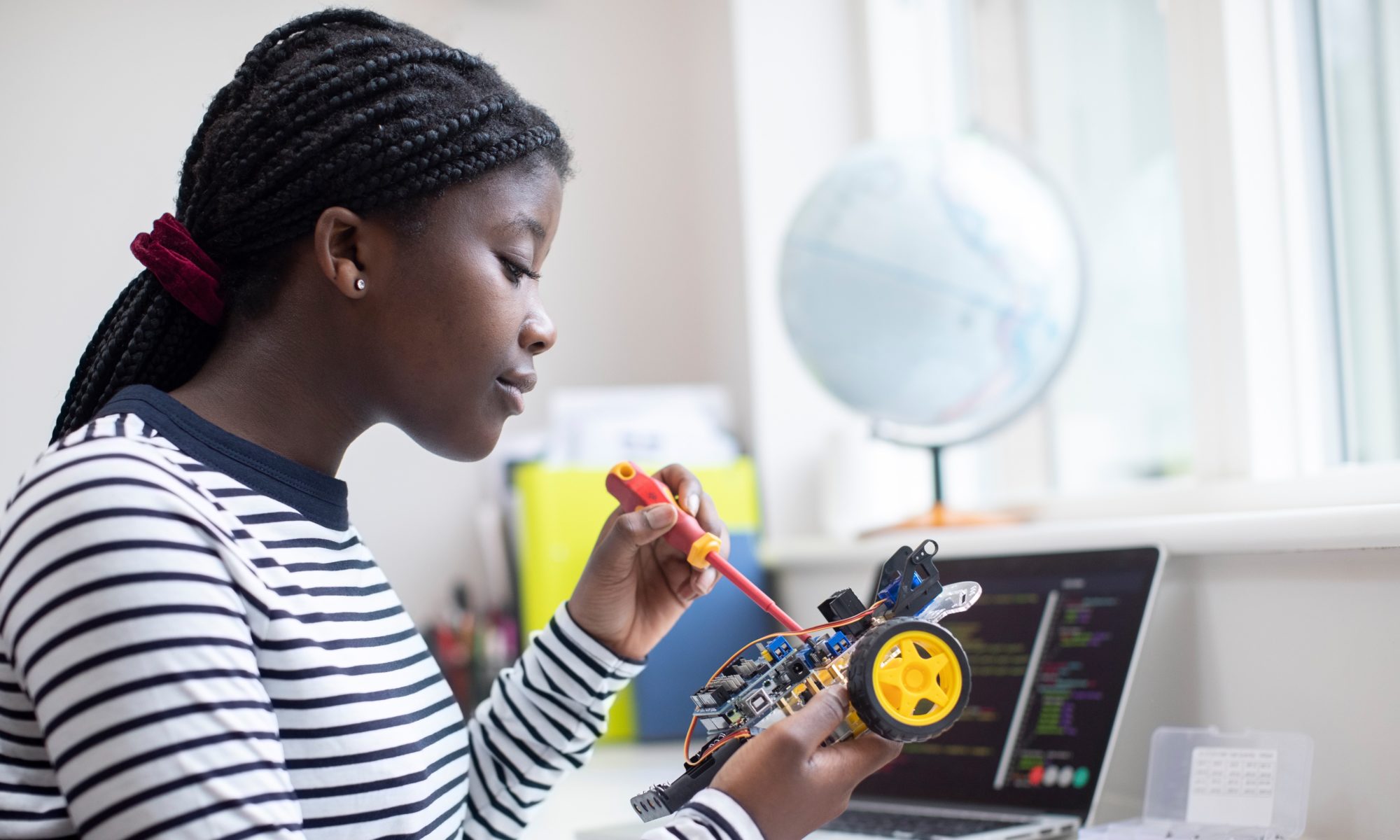
How Can Artificial Intelligence (AI) Help Bridge the STEM Education Gap for Girls in Sub-Saharan Africa?
The rise of Artificial Intelligence (AI) brings unique educational opportunities to the STEM fields, especially when it comes to female education. Female education is a powerful tool, yet gender disparities and inadequate access to STEM education can limit women and girls from reaching their full potential as STEM leaders. Especially in places like Sub-Saharan Africa, the STEM education gap can have detrimental effects, as many girls may never have the opportunity to learn the skills they need to be successful in their communities.
With this in mind, how can AI be used to bridge this gap and improve the overall quality of female STEM education?
What is the STEM Education Gap?
The STEM education gap refers to the exclusion of women and girls from STEM fields, largely due to harmful gender disparities and stereotypes. With cultural and gender norms often prioritizing boys’ education over girls, STEM education and fields are often male-dominated. Meanwhile, due to a lack of diversity and gender equality within these fields, many women and girls are left without the proper STEM education, resources, and knowledge needed to excel.
Other indicators of the STEM education gap include:
- Lack of female exposure to STEM, especially in primary schooling
- Lack of women and girls with STEM careers
- Lower STEM test scores from females compared to males
- Female discrimination
Female education tends to be overlooked, yet it should remain a priority for everyone looking to promote positive global change. Supporting female education is important in reducing these disparities and giving girls the opportunity to build better lives for themselves. Female education allows girls increased access to economic independence, better career prospects, and a future where they are empowered to make a difference in the world around them.
What Role Can Artificial Intelligence (AI) Play in Female STEM Education?
So far, Artificial Intelligence has impacted education in many ways, assisting both students and teachers in their educational endeavors. This can definitely translate to female STEM education through not just educational equipment but also empowerment, encouraging women and girls to continue pursuing STEM and making STEM fields more accessible and equal for all students.
According to LawyersHub, it is important that AI policy frameworks “include measures to promote gender equality and ensure that women have equal access to AI technologies and opportunities.” This will ensure that they get the most benefit out of AI use as possible.
Ways That Artificial Intelligence (AI) Can Help Bridge the STEM Education Gap
AI can help bridge the STEM education gap by:
- Bridging the digital divide. A large part of STEM education is technology-based, meaning that increasing digital literacy and access to technology is vital in making STEM education more equal. AI can help bridge the digital divide by, for example, making internet access and certain technology (such as text-to-speech tools) more accessible.
- Empowering STEM educators to improve lessons for their students. According to UNESCO’s International Institute for Capacity Building in Africa (IICBA), Artificial intelligence can help make lessons more dynamic and interactive, “tailor instruction to individual student needs, and provide real-time feedback, thus improving the quality of teaching and learning.”
- Enhancing student performance. Utilizing AI as an educational resource and reinforcer can lead to increased test scores and grades for female students, as well as a better understanding of the material being taught.
- Providing access to a variety of educational materials both inside and outside the classroom. These materials include writing assistance, adaptive learning, plagiarism checks, tutoring, and more.
For years, No Limit International has strived to bridge the STEM education gap through its My-Girls Code program, which offers STEM and coding workshops for girls. Artificial Intelligence offers the non-government organization more opportunities to expand on its efforts and make STEM education more equal for all.
Sub-Saharan Africa
In Sub-Saharan Africa, access to education does not always come easy. UNESCO reports that of all African regions, Sub-Saharan Africa has the highest rates of education exclusion, with many children not receiving adequate education or attending school at all. This poses great risks to female education in this region (both in STEM and in general), though the educational benefits of Artificial Intelligence suggest that AI can help reduce these risks.
Women and girls in Sub-Saharan Africa deserve an education and equal opportunities to succeed in the STEM fields. With the help of AI, female STEM education in Sub-Saharan Africa can grow to new heights and become more empowering for not just the women and girls in STEM, but for the communities they are a part of.
Support Female STEM Education with No Limit International
With your support, No Limit International can continue to make education and learning more accessible for everyone. Donate today and join us as we break barriers, erase stigmas, and provide essential resources for youth education across Africa and the world.
To learn more about No Limit International, give us a call at +237 699 99 02 89 / +237 675 80 85 10 or contact us via email at info@nolimitinternational.org. Together, we can make a lasting impact on the world we live in.